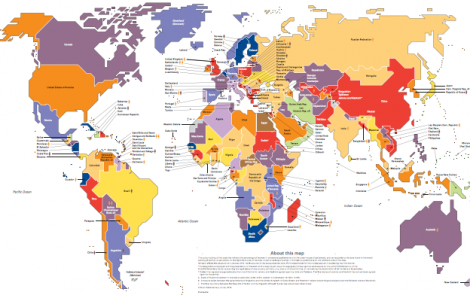The 58th Commission on the Status of Women kicks off at the United Nations this week. To mark the occasion, UN Women and the International Parliamentarian Union published this comprehensive infographic that shows levels of female participation in parliament and in governments around the world.
Take some time with the map. Click through for a larger image.
From UN Women:
In executive government, the percentage of women in ministerial posts has now reached 17.2 per cent, up from 16.1 per cent in 2008.
By 1 January 2014, there were 36 countries with 30 per cent or more women ministers, a jump from 26 in 2012. With 14 women in such posts, Nicaragua heads the global table of women in executive government, followed by Sweden, Finland, France, Cabo Verde and Norway.
Apart from the Nordic countries, it is the Americas and Africa regions which have the highest numbers of women ministers, although figures for Africa have stagnated at 20.4 per cent since 2010. Nevertheless, the Arab, Europe and Pacific regions also witnessed some growth.
Political commitment and policies are pre-requisites for women’s progress in political representation. Albania and France are strong examples of this. In 2012, Albania ranked 84th in the world for women ministers. It now ranks 27th with 30 per cent of women ministers following the decision of new Prime Minister Edi Rama to give more responsibility to women and youth.
The data on women in politics also sheds light on the progress made on women in parliament. IPU data shows that the percentage of women MPs is now at a record high of 21.8 per cent globally with numbers growing every year. There are also 46 countries with more than 30 per cent of women MPs in at least one chamber, up from 42 in January 2013. The trend, if it continues, would bode well for women’s political participation in the future.

